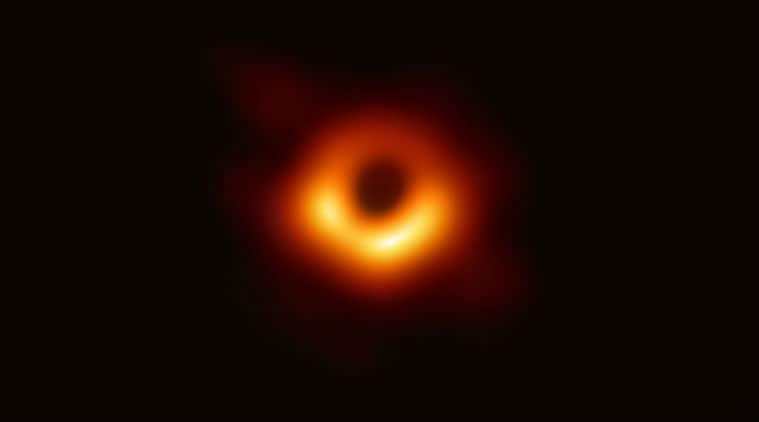
On Wednesday, space scientists from across the globe had unveiled the first-ever photograph of a black hole taken from the Event Horizon Telescope (EHT) project. The photograph shows the black hole that is located at Messier 87 (M87) galaxy, which is some 55 million light-years away from here.
The EHT is a network of eight radio telescopes on four continents that collectively operate like a single instrument nearly the size of the Earth. We answer five questions around black holes and what the latest development has revealed.
What exactly is a black hole? How big is the black hole in M87?
According to Albert Einstein’s theory of general relativity, black holes are uninhabitable chasms of spacetime that end in a ‘singularity,’ or a mass of infinite density. It’s a place so bleak that even the laws of physics break down there, Mother Nature Network reported. The gravitational forces of them are so strong that nothing, neither matter nor light, can escape once it gets too close.
As per the estimates made using different techniques, the size of the black hole in M87 has ranged between 3.5 billion and 7.22 billion times the mass of the sun. However, new EHT measurements show that its mass is about 6.5 billion solar masses. The EHT team has also determined the black hole’s size, the diameter of this black hole stretches a whopping 38 billion kilometers and it spins clockwise, according to Science News report.
How many black holes exist in the universe?
According to scientist estimates there are approximately 100 million black holes in our galaxy, however, none of them are close enough to Earth, Fortune reported.
Why did technology take so many years to achieve the first image of a black hole?
A single telescope on our planet is not powerful enough to reach a black hole. The EHT project, which linked together a network of eight telescopes around the world two years ago. These telescopes collected radio waves from the black hole, and the data was combined to produce the first-ever photograph taken of a black hole. The M87’s black hole was chosen for the photo as it was predicted to be one of the largest black holes which is viewable from Earth, AZ Central reported.
Also read Explained: Here is a black hole, and why none was photographed before
What can happen to the planets which are near the black hole?
Exactly what would happen to a planet within the black hole is currently theoretical, it is likely get crushed by the gravity of the black hole. But then what would happen if a planet was to orbit the black hole, and it was far away to escape its gravitational pull? It is expected that despite the size of a black hole, an orbiting planet is likely to circumnavigate it within a week, the Fortune report said quoting Geoffrey Crew, a research scientist at MIT’s Haystack Observatory. That particular planet would be traveling at the speed of light, the report added.
Read more Black hole event horizon: Here is what it looks like
What would happen if an individual gets swallowed into a black hole?
According to Albert Einstein’s theory of general relativity, if a black hole swallows a person, their chances of survival are practically nil. They will first get torn apart by black hole’s tidal forces, a process called spaghettification. Eventually, they will reach the gravitational singularity, where the gravitational field becomes infinitely strong. At that point, one may be crushed to an infinite density. Unfortunately, general relativity provides no basis for working out what happens next, according to a New Scientist report. “When you reach the singularity in general relativity, physics just stops, the equations break down,” the report says quoting Abhay Ashtekar of Pennsylvania State University.